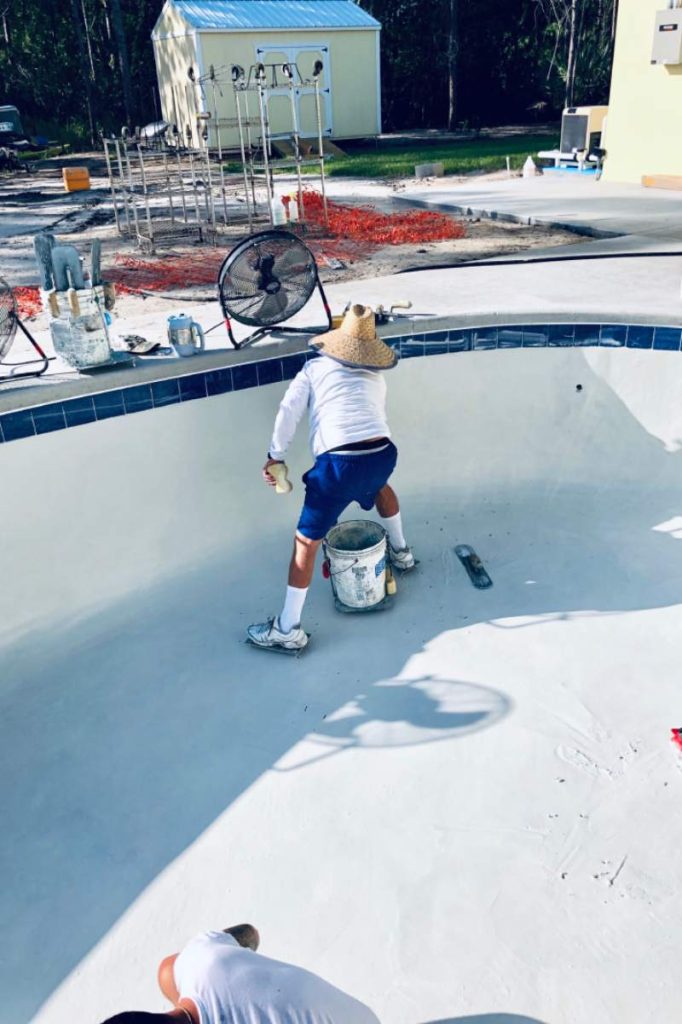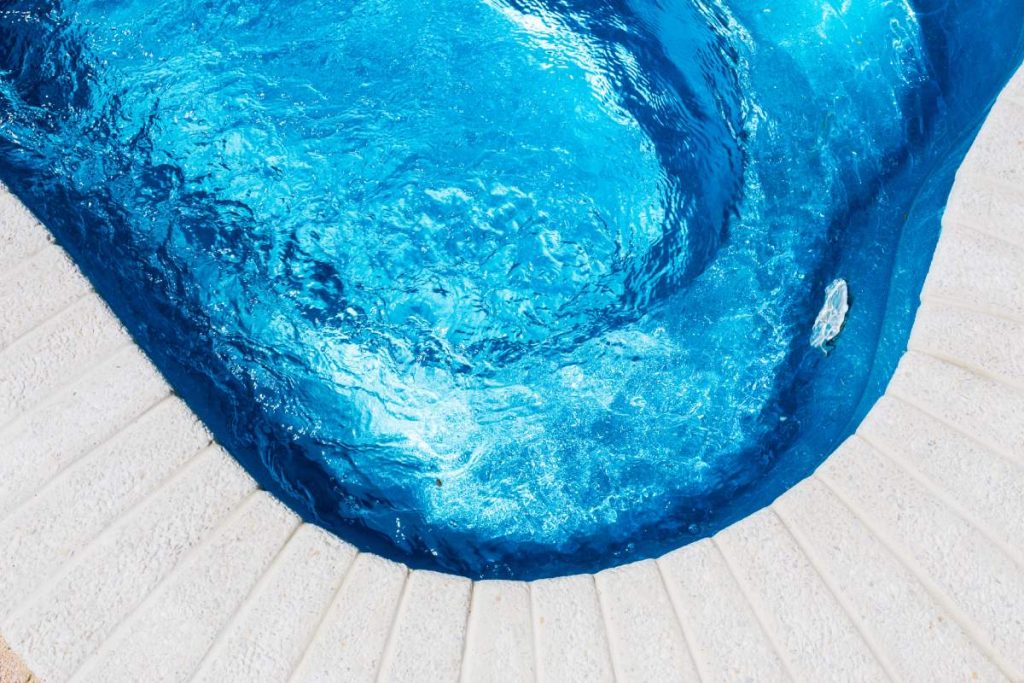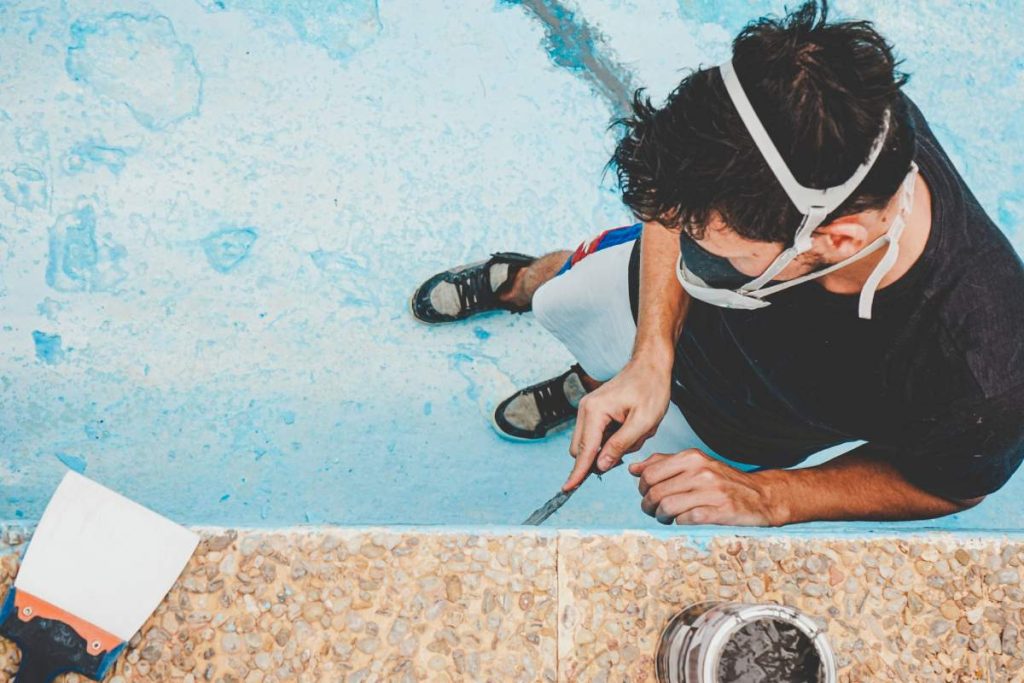What is Pool Resurfacing? Is It Worth Resurfacing a Pool? How Much Does Pool Resurfacing Cost in Australia?

Resurfacing your pool is important for maintaining its appearance, ensuring safety, and prolonging its lifespan. The cost of this work can vary depending on factors such as pool size, surface material, and local labour rates.
It’s essential to understand these costs and explore ways to save money so that you can make an informed decision and get the best value for your investment. This guide will explain the costs of resurfacing different types of pools, such as fibreglass, concrete, and pebblecrete, and provide practical tips to help you save on your project.
But first, what is pool resurfacing though?
What is Pool Resurfacing?
Pool resurfacing is the process of renewing the surface of a swimming pool. Over time, the surface of a pool can become worn out, cracked, or stained due to constant exposure to water, chemicals, and sunlight. Resurfacing is essential for maintaining the pool’s appearance and functionality.
Why Resurface a Pool?
- Aesthetic Appeal: The most noticeable reason for resurfacing is to restore the pool’s visual appeal. Over time, the pool’s surface can become discoloured or stained. Resurfacing can give your pool a fresh, new look.
- Structural Integrity: Cracks and other surface issues can compromise the structural integrity of the pool. These problems can lead to leaks or further damage if not addressed. Resurfacing can help repair these issues and prevent future complications.
- Safety: Pool safety should be prioritised, a damaged pool surface can be unsafe. Cracks or rough spots can cause injuries. A smooth, even surface ensures a safer swimming experience.
Types of Pool Surfaces
- Plaster: Traditional pool surfaces are often made from plaster. Plaster is durable and relatively inexpensive but may require more frequent maintenance. Resurfacing with plaster involves applying a new layer of plaster to the existing surface.
- Pebble Finish: This type involves embedding small pebbles or stones into the surface. It’s more durable and provides a unique, textured look. Pebble finishes are also more resistant to stains and chemicals.
- Fibreglass: A fibreglass surface is smooth and low-maintenance. Resurfacing with fibreglass involves applying a new layer of gel coat or resin over the existing surface.
- Tile: Tiling gives a pool a high-end appearance. While it is more expensive, tile is very durable and easy to clean. Resurfacing with tile means replacing or repairing the existing tiles.
The Resurfacing Process
- Assessment: The first step is to assess the condition of the pool. This includes identifying cracks, stains, and any other issues that need to be addressed.
- Preparation: The pool is drained, and the old surface is removed or prepared. This may involve sandblasting or grinding to ensure the new surface adheres properly.
- Application: The new surface material is applied. For plaster, this means spreading a new plaster mixture. For other materials like pebbles or tiles, it involves laying down the new material and ensuring it is properly set.
- Curing: After application, the new surface needs time to cure. This process can vary depending on the material used but generally involves keeping the surface moist and allowing it to set for a specified period.
- Refilling and Testing: Once the surface has cured, the pool is refilled with water. After filling, the pool is tested to ensure there are no leaks and that the new surface is functioning correctly.
Benefits of Pool Resurfacing
- Improved Appearance: Resurfacing revitalizes the pool, making it look brand new and enhancing the overall backyard aesthetic.
- Increased Longevity: A new surface extends the life of the pool by protecting it from damage and wear.
- Enhanced Comfort: A smooth, well-maintained surface provides a more comfortable and enjoyable swimming experience.
2. Fiberglass Pool Resurfacing Costs
When resurfacing fibreglass pools, you generally have two options:
- Gel Coat Replacement: This is a simpler, less expensive option where the gel coat is replaced and painted. It’s suitable if your pool’s fibreglass surface is still in good condition.
- Full Resurfacing: This involves more extensive work and is recommended for pools with significant wear and tear.
Here’s a rough cost estimate based on pool size:
- Small Pool (6m x 2.5m, 15m²):
- Gel Coat Replacement: Around $800
- Full Resurfacing: $2,100 – $3,200
- Large Pool (9m x 4m, 36m²):
- Gel Coat Replacement: Around $1,800
- Full Resurfacing: $5,100 – $7,700
3. Concrete Pool Resurfacing Costs
For concrete pools, the costs are:
- Small Pool (6m x 2.5m, 15m²): $2,500 – $3,800 for full resurfacing
- Large Pool (9m x 4m, 36m²): $6,000 – $9,000 for full resurfacing
4. Pebblecrete Pool Resurfacing Costs
Pebblecrete is a more expensive option. Costs are:
- Small Pool (6m x 2.5m, 15m²): $3,100 – $4,600 for full resurfacing
- Large Pool (9m x 4m, 36m²): $7,400 – $11,000 for full resurfacing
5. Additional Factors
- Location: Prices can vary by region, with costs potentially higher in major cities or areas with a higher cost of living.
- Preparation Work: If your pool needs extensive preparation or repair work before resurfacing, this can increase the overall cost.
- Contractor Fees: Different contractors may charge varying rates based on their expertise, reputation, and the services they provide.
6. Maintenance and Extras
- Maintenance Costs: After resurfacing, there might be additional costs for ongoing maintenance or chemicals to ensure the new surface remains in good condition.
- Extras: Features like mosaics, custom designs, or advanced finishes can also affect the overall cost.
Why is Pool Resurfacing Expensive?
Resurfacing a pool involves several detailed steps:
- Draining the Pool: Removing all water.
- Support Installation: Using props to prevent damage.
- Surface Cleaning: Removing debris and dirt.
- Surface Stripping: Removing the old surface if necessary.
- Base Inspection: Checking the concrete base layer.
- New Surface Application: Applying the new surface material.
- Pebble or Glass Bead Addition: Adding decorative elements if required.
- Curing: Allowing the new surface to set and harden.
- Refilling the Pool: Adding water back into the pool.
- Chemical Balancing: Adjusting the water chemistry.
Conclusion
Resurfacing your pool is a big deal for keeping it in good shape. Knowing the costs of different options and finding ways to cut expenses can help you keep your pool looking great without spending too much.
You can go for a cheaper resurfacing material or do some of the prep work yourself to save money. With some careful planning and smart choices, you can have a nice, fully functional pool without blowing your budget.













